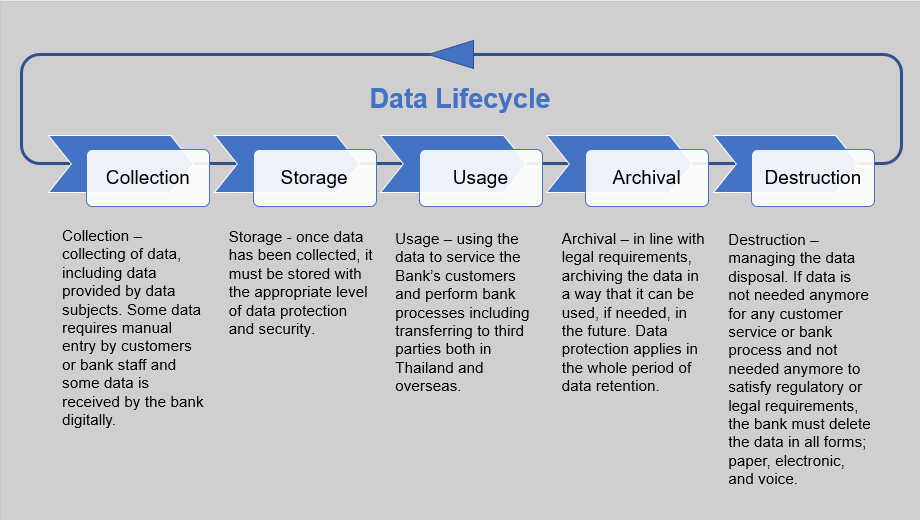The Value of Effective Data Damage Practices in Shielding Sensitive Details and Ensuring Computer Safety
In a period where information violations are progressively usual, the importance of reliable data devastation methods can not be overemphasized. Executing durable information damage approaches not just reduces these risks but also aligns with legal conformity needs, making certain that organizations support their reputation and foster client count on.
Comprehending Information Devastation
Comprehending data destruction is critical in today's digital landscape, where sensitive details can quickly be endangered. Efficient information destruction includes not simply deleting documents yet ensuring that information is irretrievable through thorough approaches. This procedure is essential for organizations that deal with private client details, copyright, or inner papers, as any type of breach can result in severe monetary and reputational effects.
Information devastation includes different techniques, including shredding physical media, degaussing magnetic storage space tools, and using software-based options that overwrite data numerous times. Each method serves a details objective and should straighten with the level of sensitivity of the information being taken care of. Physical destruction is frequently favored for difficult drives consisting of highly personal data, while software application approaches may be adequate for less delicate information.
Additionally, adhering to industry standards and regulations, such as the General Data Protection Law (GDPR) or the Medical Insurance Transportability and Liability Act (HIPAA), is imperative for compliance and to alleviate legal dangers. Organizations needs to establish a robust information damage plan, train workers on finest techniques, and on a regular basis audit their procedures to make sure that all sensitive details is thrown away safely and properly.
Dangers of Inadequate Practices
Insufficient data destruction techniques reveal organizations to considerable threats that can have far-ranging repercussions. When delicate information is not effectively taken care of, it stays at risk to unauthorized accessibility, which can result in information breaches and identification theft. Such cases not only compromise the security of people but likewise taint the company's reputation, resulting in a loss of customer count on and possible financial consequences.
In addition, regulative conformity is progressively strict in numerous markets. Failure to adhere to data devastation laws can cause significant penalties and lawsuits against companies. These fines can stress funds and divert interest from core business operations.
Additionally, the misuse of recurring data can bring about intellectual residential or commercial property theft or business espionage, threatening affordable benefits (data destruction). The influence of inadequate data destruction prolongs beyond prompt monetary losses; it can additionally result in long-term damages to brand name stability and market placement

Organizations must identify that information safety and security is not entirely about stopping violations; it additionally incorporates the liable administration of data throughout its lifecycle. Overlooking effective information destruction methods can have devastating effects, emphasizing the necessity for robust steps to minimize these threats.
Finest Practices for Information Devastation
Implementing reliable information damage methods is important for guarding delicate information and preserving compliance with regulatory standards. Organizations needs to adopt a multi-faceted approach to guarantee that data is irretrievable, thereby avoiding unauthorized gain access to and possible breaches.
First, information ought to be categorized based on level of sensitivity, permitting organizations to apply proper destruction approaches tailored to the degree of threat. For digital data, making use of software-based data-wiping tools that adhere to industry standards can efficiently overwrite existing data. Physical destruction approaches, such as shredding or degaussing, are crucial for tools that keep sensitive details, making sure total elimination.
Establishing a clear data retention plan is vital, detailing for how long various kinds of details ought to be kept before destruction. Regular audits of data storage space systems are likewise essential to determine out-of-date or unneeded information needing elimination.
Moreover, training workers on the significance of data devastation and the specific procedures to comply with fosters a society of security within the company. Keeping documentation of data damage processes offers responsibility and sustains compliance with inner policies and external laws. By adhering to these finest practices, organizations can dramatically mitigate the threats connected with data exposure.
Legal and Conformity Considerations

Failing to adhere to these policies can lead to serious fines, consisting of substantial penalties and reputational damage. Organizations should apply a robust data destruction plan that aligns with these lawful structures and supplies clear guidelines on the appropriate techniques of data disposal, whether physical shredding or digital wiping.
Moreover, maintaining documents of data see this site damage activities is vital for showing conformity during audits or evaluations. By focusing on lawful and conformity factors to consider, organizations can enhance their information security pose and foster count on with clients and stakeholders, inevitably adding to a much more safe and secure information administration setting.
Advantages of Effective Data Destruction
Effective data destruction practices expand past plain conformity; they offer considerable benefits to companies that prioritize them. By making sure that delicate info is irretrievably destroyed, companies minimize the danger of data violations and the possible financial consequences connected with them. This proactive strategy not just safeguards versus unauthorized gain access to however also enhances the overall credibility of the company in the eyes of customers and stakeholders.
Applying robust data damage methods, such as physical devastation of storage gadgets or sophisticated information cleaning methods, adds to the conditioning of an organization's cybersecurity position. data destruction. It decreases the chance of copyright burglary and safeguards exclusive info, thus preserving an affordable side on the market

Verdict
Finally, efficient information devastation methods are important for safeguarding delicate info and enhancing overall computer system safety. By implementing comprehensive methods such as software, degaussing, and shredding directory overwriting, organizations can minimize the dangers connected with unapproved access and data violations. Adherence to regulatory standards, consisting of GDPR and HIPAA, more strengthens conformity and protects versus lawful repercussions. Inevitably, a dedication to robust data damage techniques fosters a society of obligation, therefore reinforcing a company's cybersecurity pose and maintaining client depend on.
